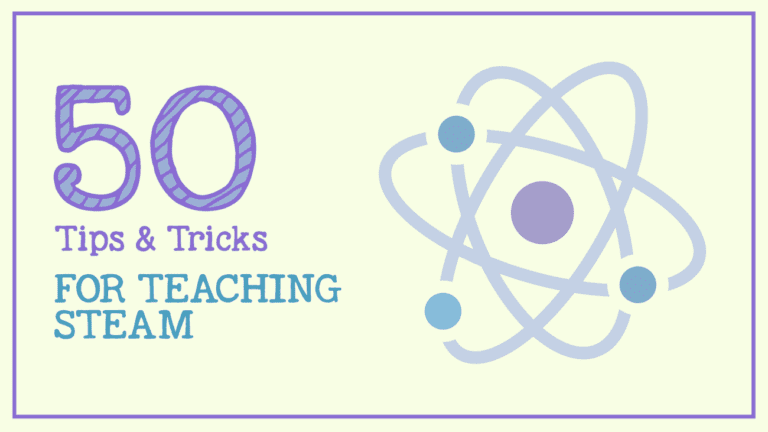STEM might win the award for the most talked-about education buzzword of the last 10 years or so. It’s gotten to the point where, similar to the organic and low-fat labels in the food industry, STEM could mean very little if you see it on toys or educational products. So how do we talk intelligently about STEM education and where it needs to go? The first step is understanding the history of this term and what it means for schools.
What is STEM?
STEM stands for science, technology, engineering, and math. STEM curriculum blends those subjects in order to teach “21st-century skills,” or tools students need to have if they wish to succeed in the workplace of the “future.” The idea is that in order to be prepared for jobs and compete with students from different parts of the world, students here in the United States need to be able to solve problems, find and use evidence, collaborate on projects, and think critically. Skills, the thinking goes, that are taught in those subjects.
Still, STEM can be hard to define. It’s such a popular term that it means a lot of different things to a lot of different people. Although the science (biology, chemistry, etc.) and math (algebra, calculus, etc.) parts of the acronym might be easy to figure out, the technology and engineering parts might be less clear. Technology includes topics such as computer programming, analytics, and design. Engineering can include topics like electronics, robotics, and civil engineering. The key term when talking about STEM is integration. STEM curriculum intentionally melds these disciplines. It’s a blended approach that encourages hands-on experience and gives students the chance to gain and apply relevant, “real-world” knowledge in the classroom.
Education buzzwords and the politicians who love them …
Like most things, STEM was around before it had an actual name. But STEM wasn’t known as STEM until Dr. Judith Ramaley coined the term. While working as director at the National Science Foundation in the early 2000s, Ramaley came up with the term to describe the blended curriculum she and her team were developing. Referred to as SMET at first, which, if we had to guess, might also be the name of a Scandinavian dessert, Ramaley changed the acronym around because she didn’t like how SMET sounded. So we (thankfully) got STEM.
STEM grew in popularity due to the concerns of politicians and other leaders that U.S. students were not keeping pace with other students and would thus not be prepared to work in the fastest-growing career sectors, which generally fall under the STEM umbrella. In 2009, the Obama administration announced its plan to support STEM curriculum that would both encourage and train students to pursue careers in those fields. It would also support teachers to, well, teach students those skills. That effort has been formalized in many ways, including using the language of STEM in Next Gen Science Standards. So, teachers everywhere are expected—by parents, administrators, etc.—to provide a STEM-rich curriculum.
How do I “STEM” my classroom?
We get it. STEM sounds like a lot. There’s a big difference between teaching students to remember to carry the one and teaching them how to code. But there are simple, unintimidating, and effective ways to implement a STEM curriculum in your classroom that have nothing to do with teaching R2-D2 to dab.
If you teach younger students, create an environment that encourages observation and asking questions that begin with Why … ? or How does … ? Go on nature walks. Sing “Old MacDonald Had a Farm” and use it as a springboard to think about the ecosystem of a farm. Explore how simple classroom machines like staplers work. Above all, it’s important to help students get a solid foundation. Make sure they are fluent in basic skills like addition and subtraction, measurement, and identifying shapes.
For upper elementary and middle school students, consider project-based learning. Pose problems that students can relate to and that can be solved in different ways, and let students work together and provide evidence of their thinking. Most importantly, students need to be able to pull from their knowledge of different subjects as they work toward an answer. The Association for Middle School Education, for example, provides several great scenarios that promote STEM learning. For instance, if there were an outbreak of illness at a carnival, how would your students solve that problem? Or, even more broadly, how might they create a community of the future?
High school students, especially juniors and seniors, should definitely be thinking about college and beyond. Do you have a student or two who might make a great crime scene investigator? How might you bring a version of the board game Clue into the classroom? Help students use forensic science and their investigative skills to determine whodunit and the cause of death. What math skills do they need to know to come up with the analytics to predict the next NBA champion? Or have students run analytics for previous basketball seasons and compare their results to what really happened.
But I teach English. What gives?
There’s no I in team. There’s also no A in STEM—until recently. Asking questions, using evidence, and working well with others to solve problems are not skills taught only in the “hard” sciences. Excellent humanities and social science curricula teach these tools as well. And they engage students’ creativity and imagination. As such, there’s a growing movement to incorporate more arts and humanities subjects into STEM curriculum. This is a great co-teaching opportunity. How might your English class join up with science students in the previously mentioned Clue scenario? Maybe they can write a backstory. Perhaps another group of students can design and build a scale version of the crime scene. There are lots of possibilities. Above all, whether it’s STEM or STEAM, your plan should encourage cross-curricular activities and inspire students to use and gain knowledge in exciting ways.
Need lesson plans and ideas? No problem.
WeAreTeachers has many excellent STEM and STEAM resources. Check out some of them:
- Hands-on STEM activities
- Post-test day STEM activities
- STEM activities with stuffed animals
- Taking STEM to STEAM
How do you “STEM” your curriculum? Come share in our WeAreTeachers HELPLINE group on Facebook.
For more articles like this, sign up for our free newsletters to find out when they’re posted.


